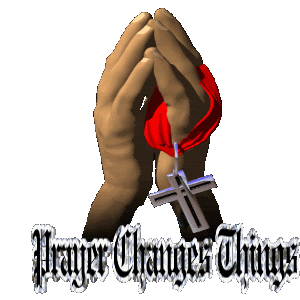Spreading God's Love Thru Prayer
The Scapegoat, a novel by Daphne du Maurier, is about two men who are amazed at the striking similarity in their appearance. They spend an evening together, but one runs off, stealing the other’s identity and leaving him to step into a life filled with problems. The second man becomes a scapegoat.
The origin of that word comes from a ceremony performed with two goats on the Hebrew Day of Atonement (known today as Yom Kippur). The high priest would sacrifice one goat and symbolically place the sins of the people on the head of the other—the scapegoat—before it was sent into the wilderness carrying away the blame of the sin (Lev. 16:7-10).
But when Jesus came, He became our scapegoat. He offered Himself up “once for all” as a sacrifice to pay for the sins of “the whole world” (1 John 2:2; Heb. 7:27). That first goat had been sacrificed as a sin offering for God’s people and symbolized Jesus’ sacrifice on the cross. The other goat was a representation of the completely innocent Jesus accepting and removing our sin and guilt.
None of us is without sin—but the Father laid on Jesus “the iniquity of us all” (Isa. 53:6). God sees followers of His Son as blameless—because Jesus took all the blame we deserve. — Cindy Hess Kasper
Jesus our Savior left heaven above,
Coming to earth as a Servant with love;
Laying aside all His glory, He came,
Giving His life, taking all of our blame. —Hess
Jesus takes our sin and gives us His salvation.
The origin of that word comes from a ceremony performed with two goats on the Hebrew Day of Atonement (known today as Yom Kippur). The high priest would sacrifice one goat and symbolically place the sins of the people on the head of the other—the scapegoat—before it was sent into the wilderness carrying away the blame of the sin (Lev. 16:7-10).
But when Jesus came, He became our scapegoat. He offered Himself up “once for all” as a sacrifice to pay for the sins of “the whole world” (1 John 2:2; Heb. 7:27). That first goat had been sacrificed as a sin offering for God’s people and symbolized Jesus’ sacrifice on the cross. The other goat was a representation of the completely innocent Jesus accepting and removing our sin and guilt.
None of us is without sin—but the Father laid on Jesus “the iniquity of us all” (Isa. 53:6). God sees followers of His Son as blameless—because Jesus took all the blame we deserve. — Cindy Hess Kasper
Jesus our Savior left heaven above,
Coming to earth as a Servant with love;
Laying aside all His glory, He came,
Giving His life, taking all of our blame. —Hess
Jesus takes our sin and gives us His salvation.
Views: 26
Comment
-
Comment by Min. Donna Dixon (Rinnah Bat Yah on April 15, 2009 at 5:31am
-

Guardians Tag Ministry Peace be unto you in the name of our Adonai (Lord) Jesus the Messiah It always brings such great joy to my spirit to hear one that divides the word correctly! This show great love and glory to our Father! Continue to go fishing you never know how just a couple a fish can bless thousands, you have blessed me this day!
© 2026 Created by Guardian.
Powered by
![]()




 Guardians Prayer Warriors if you would like to go to our Facebook page please click the buttons. If you would like to open up a Guardians Prayer Warriors group on a different site please contact Guardians Ministry so that we may put the name of your site on the page and you can use Guardians Prayer Warrior tags.
Guardians Prayer Warriors if you would like to go to our Facebook page please click the buttons. If you would like to open up a Guardians Prayer Warriors group on a different site please contact Guardians Ministry so that we may put the name of your site on the page and you can use Guardians Prayer Warrior tags.







You need to be a member of Guardians Prayer Warriors to add comments!
Join Guardians Prayer Warriors